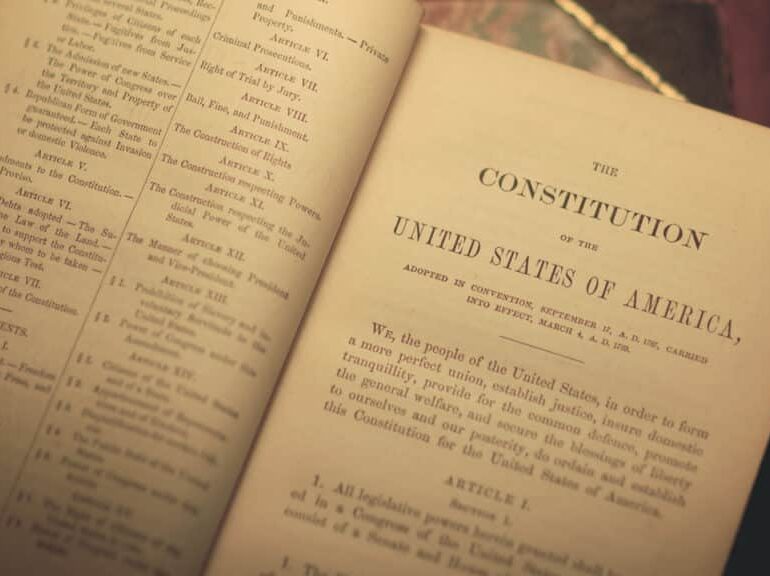
Insights into the Constitution from English Social History
By: Rob Natelson
If you want to understand the Constitution, you should know something of the social context that produced it.
Very useful for this purpose are the chapters on the 17th and 18th century in George Macaulay Trevelyan’s book, English Social History: A Survey of Six Centuries; Chaucer to Queen Victoria. Trevelyan was a leading 20th century historian. English Social History—which was written around the time World War II began—is a classic.
Here are some takeaways. I’ve included sample page numbers from the Longmans, Green and Co. Edition (1942).
* The 18th century was a classical era (pp. 397, 405). The English (and by extension, the colonists in British North America) looked to ancient Greece and Rome for much of their learning and inspiration. That is why, as I’ve noted before, familiarity with the Latin language and the literature of ancient Greece and Rome is so helpful in understanding the Constitution.
* As admirers of classical values, British and Americans during the Founding Era were committed to rationality and order. You can see this in how the Constitution is structured and worded, and how the government it created is structured and balanced.
* Direct taxes were associated with war. England’s “Land Tax” (which included levies on personal property and income) was a primary source for funding Britain’s wars during the 18th century (p.294, 306). This helps explain why the Constitution’s advocates said that although the federal government would have power to impose direct taxes, it probably would not do so except in time of war. History gave them reason to be sincere about that.
* It was a “legally-minded age” (p.350). I have commented on this previously as well: The ratifying public could understand the Constitution’s legal terms because all educated people had studied at least some law.
* As later chapters show, Trevelyan was not an economic libertarian; he supported widespread government intervention into economic life. Yet he observed that the 18th century combined free enterprise, benevolence, and widespread humanitarianism (pp. 347, 386-88). Freedom was an important value (p. 351). This helps explain why the Founders saw no need for the federal government to participate in social welfare activities.
* It also was a time of the Industrial Revolution and thus of great economic and medical advances (pp. 342, 344-45). The Founders not only foresaw change, but were part of it. And they drafted the Constitution accordingly. This is why President Franklin Roosevelt’s charge that originalist constitutional interpretation was proper only for the “horse and buggy” era is inaccurate.
* The England of the time—unlike during previous eras—was extraordinarily decentralized (p.352). As I have observed previously, history’s periods of explosive progress generally came at times of political decentralization.
* Smuggling was respectable (p.387). The public had little respect for the mercantilist regime of tariffs and trade restrictions. This helps explain why a known smuggler such as John Hancock could occupy such a prominent place in the community. Hancock, of course, signed the Declaration of Independence as a member of the Second Continental Congress, served as governor of Massachusetts, and helped broker the deal whereby Massachusetts ratified the Constitution.
* Key to the success of the time was the independent portion of the population—yeoman farmers, farmers with long-term tenancies, the landed gentry, and so forth (e.g., p. 301). The belief that for popular government to work well, the decisionmakers must be independent also is baked into our constitutional system. Dependency leads to demagogic and dysfunctional government.